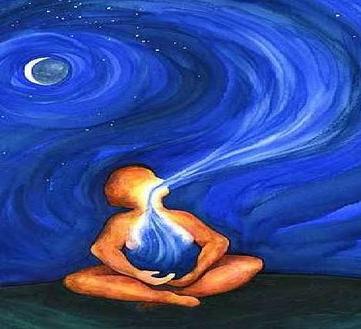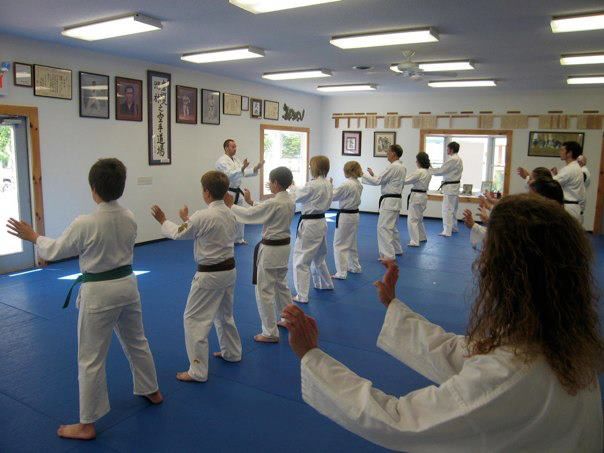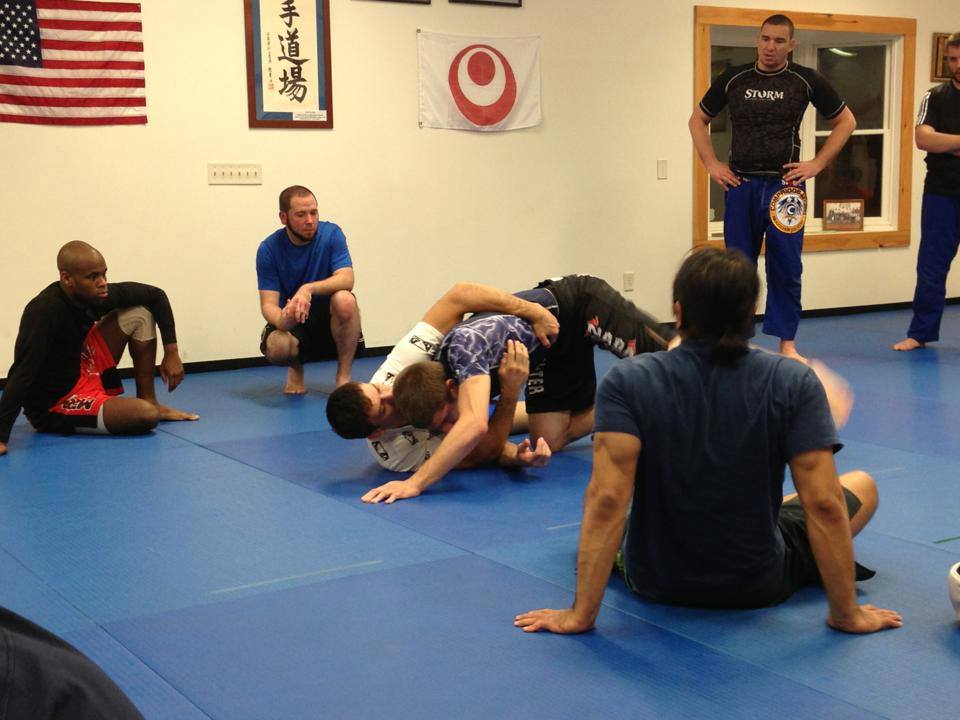
Breathing exercises are common in yoga, chi-kung/qigong, and other forms of meditation. In the martial arts, these can range from prescribed techniques incorporated into forms to separate exercises performed on their own. There are breathing methods used in Karate during drills, Kata and meditation. Some Jiu-jitsu practitioners, including the legendary Rickson Gracie, do specific exercises as part of their training. In Muay Thai and boxing, they may simply be a series of grunts or hisses used when striking.
When Senseis Connie and Mark arrived as the Chief Instructors at the Okinawan Karate School in August of 2002 it quickly became obvious that few, if any, of the students there were employing the commonly accepted breathing methods used in Uechi-Ryu/ Shohei-Ryu. Despite being able to recite that breathing was one of the important aspects of training, virtually no-one understood what that meant. Only an occasional Kiai or spirit yell was included in training . . . but, even that was typically not performed correctly. In some cases, students actually felt exhausted or dizzy from misinterpreting the prescribed breathing, or even holding their breath during rigorous exercises.
After months of trying to help students breath properly in their training, Senseis Connie and Mark wrote an article on the subject for the dojo’s newsletter in June of 2003. This seemed to clarify the issue for many students and help them get on the right track. The Flynns didn’t think much of the article once it was placed in the newsletter . . . until their first visit to Okinawa in November of that year. After training one night Master Shigeru Takamiyagi turned to the Flynns and asked “who wrote the article on breathing in your newsletter?” They looked at each other and said “well . . . we did . . . why?” He proceeded to tell them that he thought it was very good . . . so good, in fact, that he had translated it into Japanese (by hand at that time) and shared it with his students. Of course, Senseis Mark and Connie were surprised to hear this, being validated by such an authority on what had become a somewhat difficult issue back home.
Thanks largely to Sensei Takamiyagi versions of this write-up have appeared in Uechi-Ryu and Shohei-Ryu books, videos, and websites. Here is the original article unchanged. Enjoy!
Proper Breathing Technique?
The five factors of Sanchin development are concepts Shohei-Ryu students are exposed to in the early stages of their training (even if only to be able to recite them for promotions.) “To master the proper breathing technique” sits in the very center of the five (listed as the third) creating a perfect balance between the other factors before and after it. It is very important to know how to breathe. Not just the everyday, involuntary breathing we do to maintain our life, but as an essential and fundamental factor in the development of concentration, spirit and power!
In Sanchin kata, a prescribed pattern of breathing is employed by the student as a means to train the body to coordinate their breathing with their movement. The correct technique is to drop the breath into the lower abdomen or hara and use the diaphragm to drive a circular pattern between one-third and two-thirds of the lung capacity. Inhalations are drawn silently through the nose with any pulling or drawing motion (moves into the body.) When applying strength (usually during an extending movement) additional tension is used to bear down on the hara for an explosive focus of power known as Kime. While recovering to the guard or ready position a short burst of air is exhaled through the mouth. During the exhalation, the student should place the tongue against the roof of their mouth and make a short and forceful “hissing” sound.
Sanchin exhalations are “noisy” not JUST for the sake of noise, but for several training purposes. The “noise” should be an audible representation of air being released deep from within our hara, passing through our tongue and the roof of our mouth, out of the mouth. If done properly, pushing your tongue against the roof of your mouth can help to engage the diaphragm and abdominal muscles (all part of the physical region which represents the hara) in the act of breathing. Making this audible is important because it allows you and your instructor to provide feedback on ways to improve the breathing process.
This breathing technique has multiple purposes that should develop over time:
· to maintain an appropriate oxygen supply to the body
· to maximize the body’s defensive position by keeping the lungs in their strongest position
· to aid in focus and concentration
· to develop calmness and relaxation even in the most stressful situations
· to develop an understanding of the importance of silence (i.e. no talking)
· and, ultimately, to develop important aspects of the zen mind (zanshin/ mushin.)
Some experts believe that by performing regular breathing exercises similar to Sanchin breathing over long periods of time, the student is able to achieve deeper and greater concentration and control of their bodies. This is due to the fact that breathing can be controlled by both the involuntary and voluntary or conscious part of the mind. By increasing the ability to control the breath, the student can tap into the “involuntary” mind, and learn to control other aspects of the body. This is how students of certain schools of meditation are able to voluntarily lower their heart rate, or body temperature! The average student may never achieve THAT level of consciousness, but Sanchin breathing will, at least, provide them with the ability to concentrate better, have more intense spirit, and be stronger.
It is not uncommon for students to resist performing the Sanchin breathing initially . . . particularly the audible part. They may feel embarrassed or foolish about making a noise that the average person does not understand, but this concern of being judged by others has no place in the dojo. It is driven by the ego, which must be minimized along the long road to true development of the Zen mind. The student must let go of these uncomfortable feelings and connect their breathing to their concentration and spirit. Sanchin breathing should ultimately become similar to the Kiai, as an expression of the student’s intensity, determination and awareness.



 RSS Feed
RSS Feed